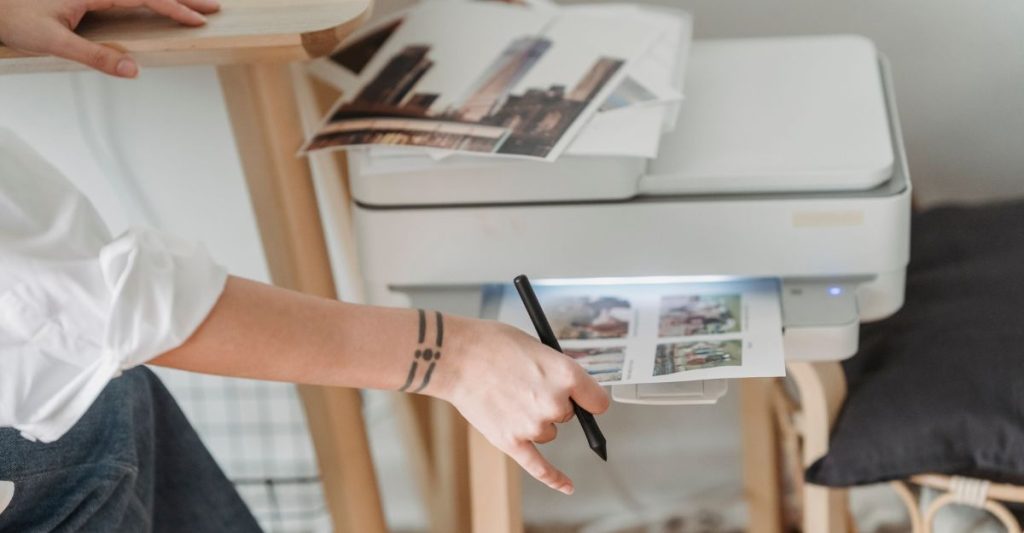Print Like a Pro: Expert Tips and Tricks for Professional-Quality Results
Printing is an essential aspect of many businesses and creative projects. Whether you’re preparing marketing materials, designing invitations, or creating artwork, achieving professional-quality results is crucial. With the right knowledge and techniques, you can elevate your printing game and produce stunning, high-quality prints. In this blog, we’ll explore expert tips and tricks that will help you print like a pro.
1. Calibrate Your Monitor
Before diving into the world of printing, it’s important to ensure that your monitor is calibrated correctly. Calibration ensures that the colors you see on your screen accurately match the final printed output. Use a hardware calibration device or software tools to adjust the brightness, contrast, and color settings of your monitor. This step sets a solid foundation for achieving consistent and accurate color reproduction throughout the printing process.
2. Choose the Right Paper
The choice of paper significantly impacts the quality and appearance of your prints. Different types of paper have varying weights, textures, and finishes that can enhance or detract from your designs. Consider factors such as the purpose of your print, the desired level of detail, and the type of ink you’ll be using when selecting paper. Matte paper is ideal for text-heavy documents, while glossy paper lends itself to vibrant images and photographs. Fine art or specialty papers add another layer of depth and texture to your prints. Experiment with different papers to find the perfect fit for each project.
3. Use High-Quality Inks
Investing in high-quality inks is crucial for achieving professional-grade prints. OEM (Original Equipment Manufacturer) inks are specifically designed for your printer model and are known for their superior color accuracy and longevity. While they may be more expensive than third-party inks, the investment is worth it for the quality and consistency they provide. Using genuine inks also extends the life of your printer and reduces the risk of clogging or other technical issues.
4. Check Print Settings
Before hitting that print button, take a moment to review and adjust your print settings. Pay attention to settings such as color mode (CMYK for print), resolution, and paper type. Choosing the appropriate color mode ensures accurate color representation, while adjusting the resolution ensures sharpness and detail in your prints. Selecting the correct paper type allows the printer to optimize ink distribution and drying time for optimal results. Take advantage of advanced printer settings like color management and ICC profiles to fine-tune your prints further.
5. Perform Test Prints
Performing test prints is an essential step in achieving professional-quality results. Before printing a large batch or finalizing a design, print a small sample to evaluate colors, sharpness, and overall appearance. This allows you to make adjustments and fine-tune your settings to achieve the desired outcome. Consider creating a printing test page that includes various color swatches, gradients, and text samples to evaluate different aspects of print quality.
6. Maintain Your Printer
Regular maintenance of your printer is key to achieving consistent and professional-quality prints. Regularly clean the printhead and other critical components to prevent clogs and ensure optimal ink flow. Replace cartridges or toner when they are low to avoid any print quality issues. Follow the manufacturer’s guidelines for cleaning and maintenance, and consider scheduling routine maintenance checks with a professional technician to keep your printer running smoothly.
7. Edit and Optimize Your Design
To achieve the best printing results, it’s important to optimize your design for print. Use professional design software such as Adobe Photoshop or Illustrator to create your artwork. Ensure that your design is set to the correct color space (CMYK) and that images are high resolution (300 DPI or higher) for crisp and detailed prints. Pay attention to margins, bleeds, and trim marks to avoid any unwanted cropping or cutting off of your design elements.
8. Proofread Carefully
One aspect of professional-quality printing often overlooked is proofreading. Before sending your files to print, check for any spelling errors, grammar mistakes, or design inconsistencies. Ensure that all text is legible and correctly aligned. It’s always a good idea to have a fresh set of eyes review your design to catch any potential errors that you may have missed.
9. Seek Professional Printing Services
If you’re aiming for truly professional-level results or require large-scale printing, consider partnering with a professional printing service. These services have the expertise, equipment, and materials necessary to produce high-quality prints. They can offer a wide range of options such as different paper types, finishes, and specialty printing techniques to bring your vision to life.
10. Consider Pantone Matching System (PMS) Colors
The Pantone Matching System, or PMS, is a standardized color matching system used in the printing industry. It allows for precise color reproduction by assigning specific codes to each color. If color accuracy is crucial for your project, consider using PMS colors in your design. These colors are pre-mixed and can be reproduced accurately across different printing processes and materials. By utilizing PMS colors, you can ensure that your prints maintain consistent color representation across various platforms.
11. Explore Specialty Printing Techniques
To add an extra touch of professionalism and uniqueness to your prints, consider exploring specialty printing techniques. These techniques can elevate your designs and create visually striking effects. Some popular options include foil stamping, embossing, debossing, spot UV coating, and die cutting. Each technique offers its own distinct appeal and can help your prints stand out from the crowd. Work with a professional printer or graphic designer who specializes in these techniques to bring your vision to life.
12. Consider Print Finishing Options
Print finishing options can further enhance the overall look and feel of your prints. Options such as laminating, varnishing, and binding can provide durability, protection, and a polished finish to your materials. For example, laminating can add a glossy or matte protective layer to your prints, while binding options like saddle stitching or perfect binding can give your documents a professional and cohesive appearance. Explore different finishing options based on your specific needs and budget.
13. Experiment with Different Printers and Technologies
Don’t limit yourself to just one printer or printing technology. Explore different types of printers, such as inkjet or laser, and experiment with different brands and models. Each printer has its own strengths and limitations, so understanding their capabilities can help you achieve the best results for your specific projects. Additionally, keep an eye on emerging printing technologies, such as UV printing or 3D printing, which continue to evolve and offer exciting possibilities for unique and high-quality prints.
14. Stay Updated on Industry Trends and Techniques
The printing industry is constantly evolving, with new trends and techniques emerging regularly. Stay updated with the latest developments by reading industry publications, attending trade shows and conferences, and following influential designers and printers on social media. By staying informed, you can incorporate new and innovative techniques into your printing workflow and stay ahead of the curve.
15. Don’t Underestimate the Power of Design
While technical aspects and printing techniques are crucial, design plays a significant role in achieving professional-quality prints. Pay attention to design principles such as layout, typography, color theory, and composition. A well-designed piece will enhance the impact of your prints and make them visually appealing to your audience. Invest time in honing your design skills or collaborate with a professional graphic designer to create eye-catching and effective designs.
Conclusion
In conclusion, printing like a pro requires attention to detail, proper preparation, and a combination of technical knowledge and creativity. By calibrating your monitor, choosing the right paper and inks, checking print settings, performing test prints, maintaining your printer, optimizing your design, proofreading diligently, seeking professional printing services when needed, exploring specialty techniques and finishing options, experimenting with different printers and technologies, staying updated on industry trends, and focusing on great design, you can achieve professional-quality prints that leave a lasting impression.
Remember, practice makes perfect. Don’t be afraid to experiment, learn from your experiences, and continuously refine your printing process. With dedication and the right mindset, you can unlock your full potential and print like a true professional.



